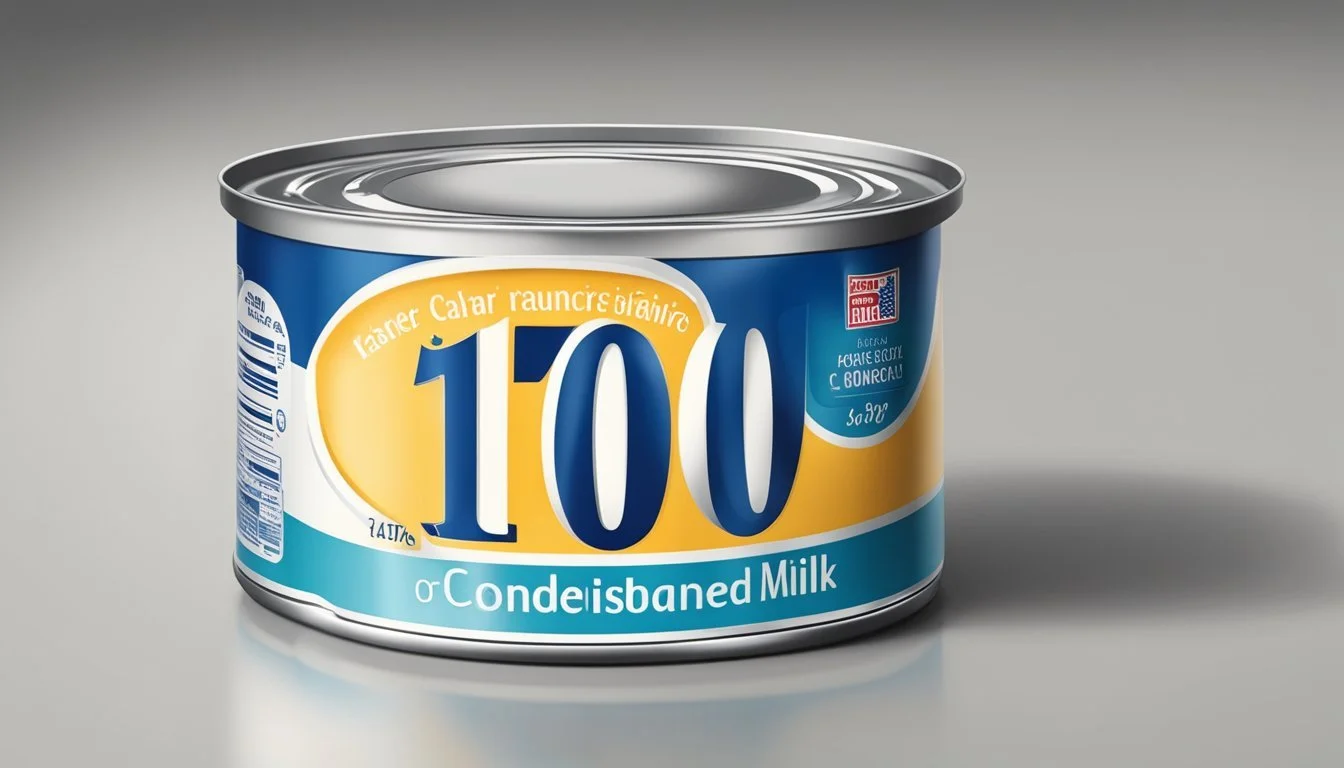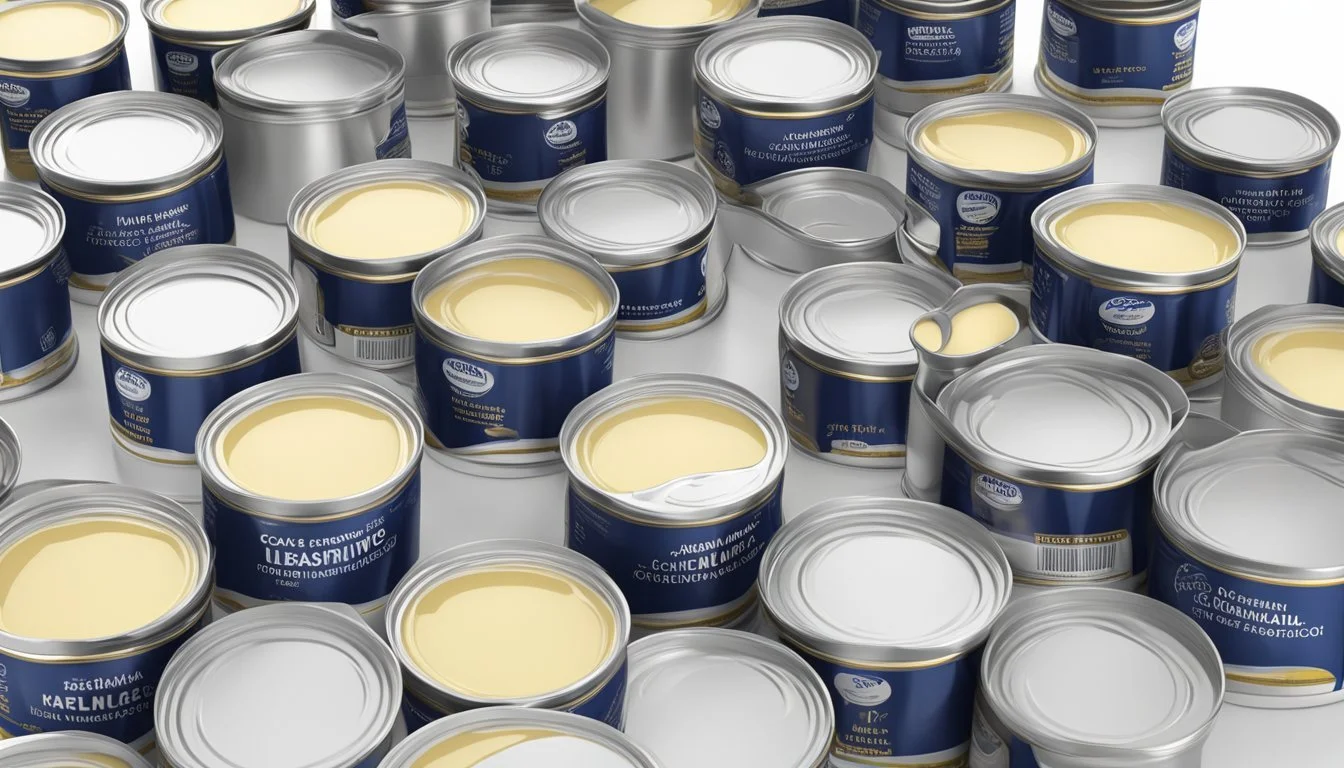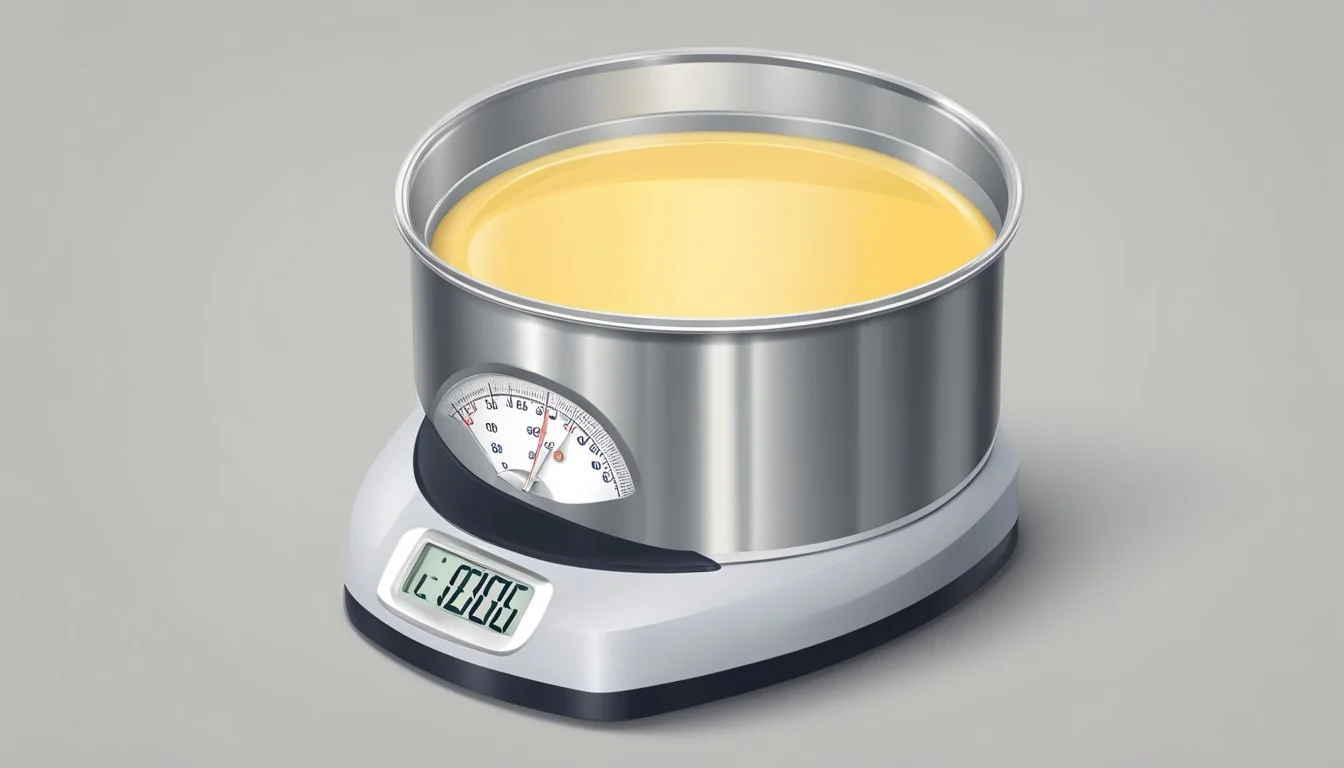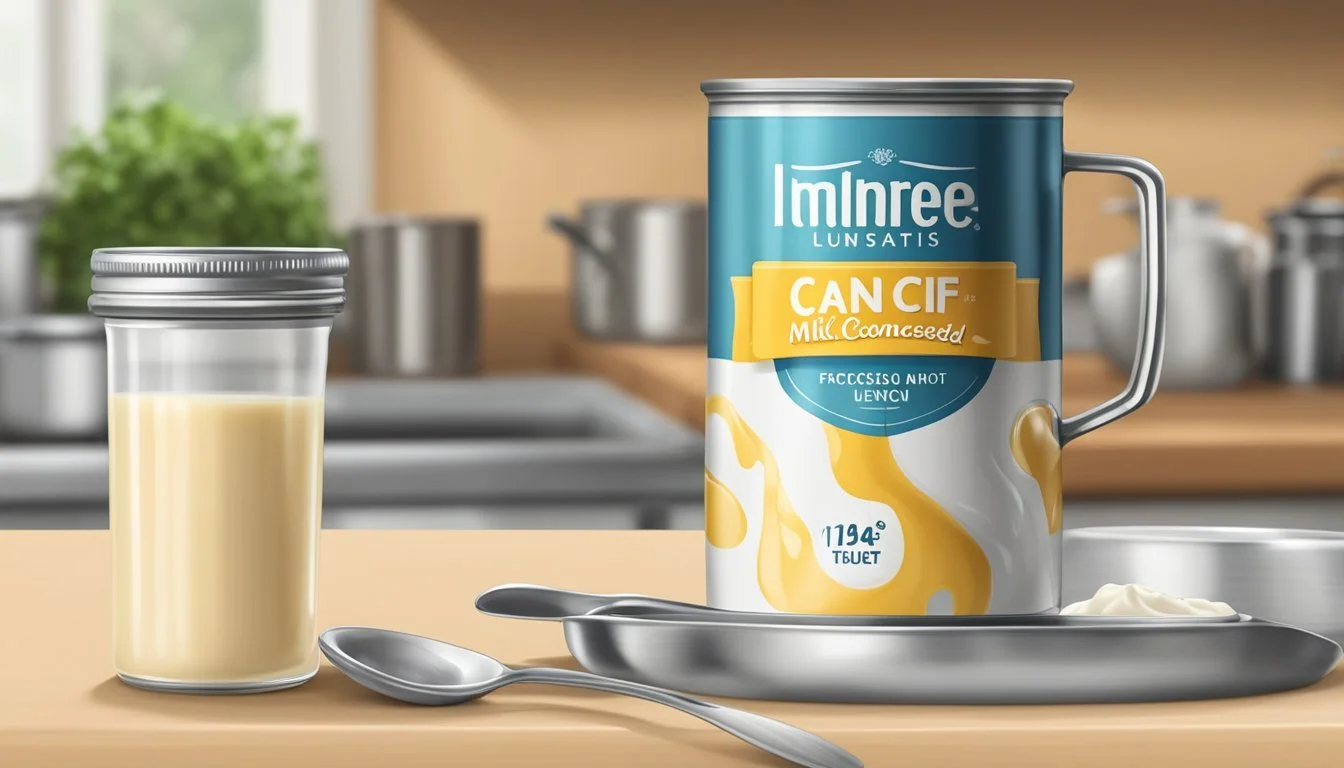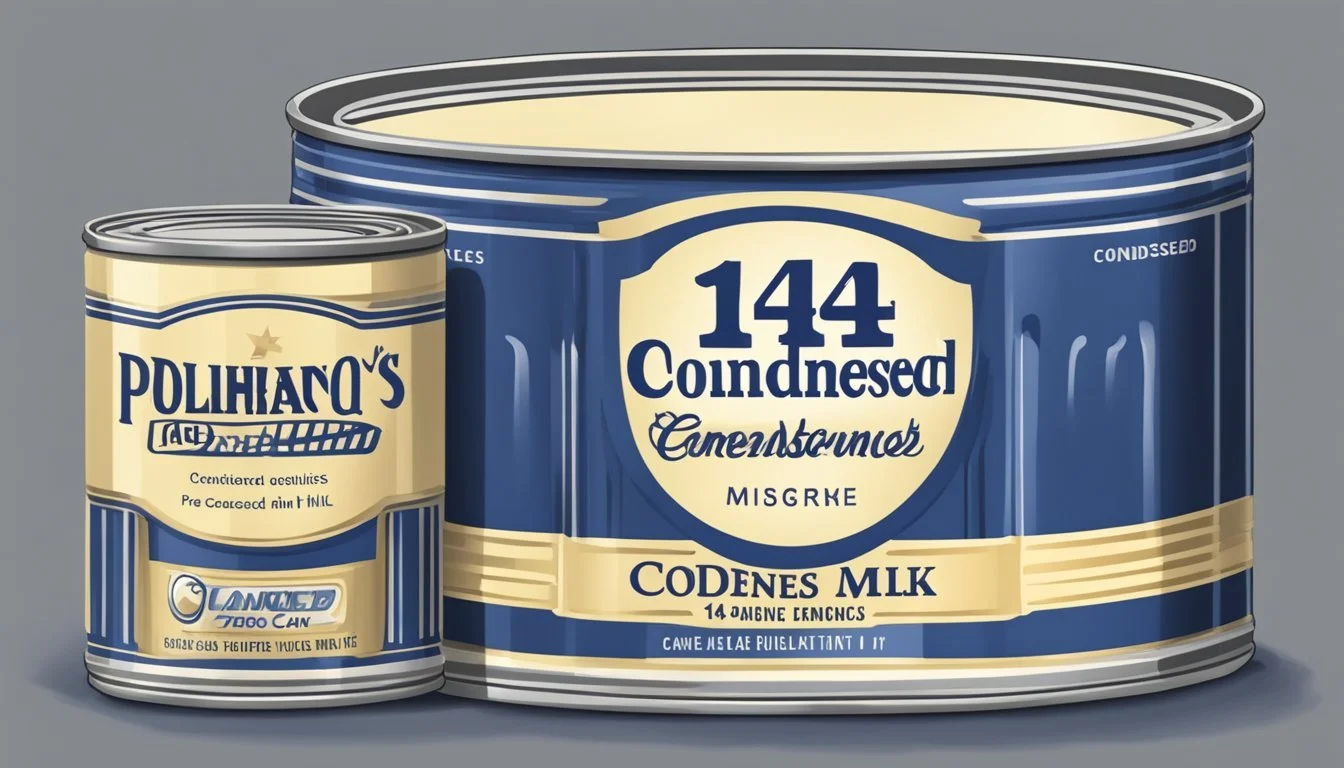How Many Ounces in a Can of Condensed Milk
Understanding Can Sizes
Determining the weight of a can of condensed milk is straightforward; the standard size that one finds in most grocery stores is 14 ounces. This measurement is particularly useful when baking or cooking, as many recipes specify the use of condensed milk by referencing the can size rather than listing a volume or weight. Being aware of the can's weight allows for accurate adjustments or scaling of a recipe as needed.
Notably, while the 14-ounce can is predominant, variations do exist, and manufacturers may offer different sizes. Consequently, when shopping or recipe planning, it's prudent to check the label for the precise weight. Sweetened condensed milk is often used in recipes for its creamy texture and sweetness, making it an essential ingredient for a variety of desserts and sweet dishes.
The weight of a can of sweetened condensed milk is not to be confused with its volume, as 14 ounces refers to the net weight, which is a measure of mass, while fluid ounces measure volume. This distinction is important because the density of sweetened condensed milk means that a 14-ounce can will not equate to 14 fluid ounces when poured into a measuring cup. Understanding these measurements ensures recipes turn out as intended.
Understanding Condensed Milk
Condensed milk is a key ingredient in numerous recipes, providing creaminess and sweetness. It comes in different varieties and is primarily used in cooking and baking.
Defining Condensed Milk
Condensed milk is cow's milk from which water has been removed. It is a thick, sweet product that undergoes a vacuum process to concentrate its contents. This produces a dense, rich texture that is versatile for sweet and savory dishes alike. Because of its reduction, condensed milk has a prolonged shelf life, making it a popular canned good.
Sweetened vs Unsweetened Condensed Milk
There are two main types of condensed milk: sweetened and unsweetened.
Sweetened Condensed Milk: As the name suggests, this type has sugar added, which not only enhances flavor but also extends shelf life. Sweetened condensed milk is typically found in a 14-ounce can, and it's a staple for desserts and sweet treats due to its distinct taste and creamy texture.
Unsweetened Condensed Milk: Also known as evaporated milk, this form has no sugar added and is less thick than its sweetened counterpart. Unsweetened condensed milk can add richness to dishes without the additional sweetness.
Condensed Milk in Recipes
Condensed milk plays a substantial role in recipes for its texture and flavor contribution. In baking, it's often used in:
Fudges
Pies
Cakes
Frostings
It adds moisture and a tender texture to baked goods. For cooking, it's similarly integral in:
Cream-based soups
Sauces
Beverages such as coffee and tea
One should note that substituting sweetened for unsweetened milk or vice versa can significantly alter the outcome of the recipe.
Standard Can Sizes and Volumes
When dealing with recipes, it's essential to understand the specific can sizes and volumes, as this has a direct impact on the success of your dish.
Common Can Measurements
Standard can sizes are designed to hold a consistent weight and volume of contents. For example, the typical can of condensed milk holds 14 ounces and is also commonly referred to as weighing 396 grams. This size is substantial enough to provide sufficient creaminess and sweetness for most recipes.
Here is a list of common can sizes and their respective volumes:
8 oz (227g): Often used for small servings or individual portions.
12 oz (340g)
14 oz (397g): Standard size for condensed milk.
15 oz (425g)
16 oz (454g): Common for fruits, vegetables, and beans.
Label Size and Content Volume
The size indicated on a can's label often refers to its weight rather than volume, although volume measurements are sometimes included too. For instance:
#1 can: weighs around 11 ounces (about 312 grams), equivalent to 1 1/3 cups.
#2 can: holds about 1 pound 4 ounces (or 567 grams), translating to 2 1/2 cups.
Can Size Variations in Recipes
When using canned ingredients in recipes, you might encounter different sizes such as:
#300 can: ranges from 14 to 16 ounces (about 396 to 454 grams).
#303 can: typically contains 16 to 17 ounces (about 454 to 482 grams).
Larger sizes also exist, for example:
#3 can: approximately 51 ounces or 1.5 kilograms.
#5 can: around 56 ounces or 1.6 kilograms.
#10 can: commonly used in foodservice, contains about 6 pounds 6 ounces (or 2.9 kilograms), which is roughly 12 1/2 cups of product.
Recipes may specify can sizes, so knowing equivalents is crucial for accurate substitutions. For condensed milk, a 14-ounce can generally equals about 1 1/4 cups. If a 15-ounce can is called for, it translates to approximately 1 1/3 cups. In cases where different sizes are necessary, adjust your measurements accordingly as it depends on the size described in the recipe.
Measuring Condensed Milk
When working with condensed milk, it's crucial to understand that the standard can size is 14 ounces, which typically translates to about 1 1/3 cups.
Convert Ounces to Cups in Condensed Milk
For culinary purposes, the conversion of ounces to cups is essential when measuring condensed milk. A typical 14-ounce can broadly equates to:
14 ounces = 1 1/3 cups
This conversion is particularly useful when a recipe calls for volume measurement rather than weight. It's helpful to note that:
1 ounce of condensed milk ≈ 0.095 cups
Therefore, for smaller or larger measurements, one can multiply the ounces by this factor to find the equivalent in cups.
Measuring Without a Scale
Some situations may require measuring condensed milk without the use of a scale. In such cases, it's best to use measuring cups or spoons that correspond to standard kitchen measurements. Given that a 14-ounce can equals approximately 1 1/3 cups, a cook can estimate measurements by using these cup fractions:
Full can (14 ounces) = 1 1/3 cups
Half can ≈ 2/3 cups
Quarter can ≈ 1/3 cups
For smaller amounts, tablespoons and teaspoons can be used:
1 tablespoon = 0.5 ounces approximately
1 teaspoon = 0.166 ounces approximately
Applying these conversions facilitates measurement of condensed milk when a scale is not accessible.
Culinary Uses of Condensed Milk
Condensed milk, with its rich sweetness and creamy texture, serves as a versatile ingredient in various culinary preparations. From enhancing beverages to becoming the star of desserts, its unique properties make it indispensable in many recipes.
Dessert Applications
Condensed milk is a staple in dessert recipes due to its ability to add a luxuriously sweet flavor and creamy consistency. It is often used in making fudge, where it aids in achieving a soft, melt-in-the-mouth texture. In ice cream, condensed milk helps prevent crystallization, resulting in a smoother scoop. Dessert creators frequently use it in caramel preparations for its color and flavor profile, and it's a crucial component in many other delicious recipes.
Fudge: A key ingredient for a creamy and soft consistency.
Ice Cream: Reduces crystallization for a smoother texture.
Caramel: Provides color and enhances the flavor profile.
Condensed Milk in Beverages
In beverages, condensed milk adds a depth of sweetness and creaminess that can transform a simple drink into a rich indulgence. It's commonly stirred into tea and coffee, offering an alternative to regular milk with a more pronounced taste. The inclusion of sweetened condensed milk can turn an ordinary cup of coffee into a special treat, reminiscent of traditional coffee shop recipes.
Tea: Elevates the drink with a richer, creamy flavor.
Coffee: Offers a sweet and creamy alternative to regular milk.
Savory Dishes and Condensed Milk
Though not as common, condensed milk can find its way into certain savory dishes where its sweetness complements specific flavor profiles. It's occasionally incorporated into sauces or glazes to provide a subtle sweet backdrop to dishes that benefit from a touch of sugar.
Savory Glazes: Balances sweetness within a complex flavor profile in certain recipes.
Substituting Condensed Milk
Substituting sweetened condensed milk in recipes is a straightforward process that often involves combining dairy or non-dairy milk with a form of sweetener. The goal is to replicate the taste and creaminess of traditional condensed milk while adjusting the quantity to meet recipe requirements.
Alternative Ingredients
When one needs to substitute sweetened condensed milk, there are several ingredients that can be used. These alternatives offer flexibility for those with dietary restrictions or when condensed milk is unavailable.
Dairy-Free Options:
Coconut Milk and Sugar: Combine a 13.5-ounce can of full-fat coconut milk with 1/4 cup of sugar. This mixture can replace a 14-ounce can of sweetened condensed milk.
Almond Milk, Sugar, and Thickener: Mix 2 cups of almond milk with 1 cup of sugar and 1-2 tablespoons of cornstarch. Adjust the texture by simmering until it thickens.
Low Sugar Options:
Evaporated Milk and Sugar Substitute: Use 1 cup of evaporated milk with a sugar substitute to taste. The result will be less sweet but can provide the required creaminess.
Homemade Condensed Milk Recipes
Creating homemade condensed milk enables one to tailor the sweetness and consistency to their preference. Here are concise recipes:
Basic Homemade Condensed Milk:
Regular Milk and Sugar: Combine 12 ounces of evaporated milk with 1 1/2 cups of sugar. Heat the mixture until the sugar dissolves and it slightly thickens.
With Dry Milk Powder:
Nonfat Dry Milk and Water: A shelf-stable option involving nonfat dry milk powder and water mixed with a sweetener, cooked to achieve a condensed milk-like consistency.
By using these recipes and alternative ingredients, one has the versatility to replace sweetened condensed milk in any dish where this ingredient is pivotal for the overall taste and texture.
Storage and Preservation
When it comes to condensed milk, the primary concerns for storage and preservation are maintaining its freshness and preventing spoilage. Proper practices ensure the product can be safely used throughout its shelf life.
Shelf Life of Condensed Milk
Unopened condensed milk can last well beyond the printed expiration date if it is stored properly in a cool, dry place. Once opened, condensed milk should be transferred to an airtight container and can be kept in the refrigerator for up to 14 days. To track its longevity, always label the container with the opening date.
Storing Opened Condensed Milk
Opened condensed milk must be refrigerated to prevent spoilage. Storage in the refrigerator is crucial for maintaining freshness. It should be kept in an airtight container to avoid absorbing other odors and flavors from the surrounding environment within the fridge.
Freezing Condensed Milk
Condensed milk can be frozen to extend its usability. By placing it in an airtight container and leaving some room for expansion, it can keep for months in the freezer. When ready to use, one should thaw it in the refrigerator to preserve its texture and flavor. Keep in mind, however, that freezing may slightly alter the consistency, making it best suited for baked goods or cooking rather than direct consumption.
Health and Nutrition
When considering health and nutrition regarding sweetened condensed milk, it is essential to understand its nutritional content and dietary impact. The typical can of condensed milk contains a concentrated source of calories and added sugars.
Nutritional Information
Sweetened condensed milk is a rich source of calories primarily from sugars and fats. A standard 14-ounce can of sweetened condensed milk contains:
Sugar: Sweetened condensed milk has a high sugar content, often used to enhance flavor and texture in recipes.
Fat: It includes a significant amount of fat, especially saturated fat, which is a concern for cardiovascular health.
Added Sugar: All of its sugar content is added sugar since it is processed with extra sugar for preservation and taste.
Fat Content: On average, one tablespoon of sweetened condensed milk contains almost 2 grams of fat.
Ash: It contains minerals represented as ash in nutrient analyses, providing a small amount of micronutrients.
Sweetened condensed milk does not contain gluten.
Dietary Considerations
Due to its high sugar and fat content, sweetened condensed milk should be consumed in moderation. Individuals with dietary restrictions may need to consider:
High Saturated Fat: The saturated fat content can contribute negatively to cardiovascular health.
Added Sugars: High levels of added sugars can significantly increase calorie intake and affect blood sugar levels.
Gluten-Free: Those adhering to a gluten-free diet can incorporate sweetened condensed milk into their dishes as it is gluten-free.
When a recipe calls for sweetened condensed milk, one can adjust the rest of the ingredients to balance the overall nutritional profile of the dish.
Buying Guide
When selecting a can of condensed milk, it's essential to consider the quantity needed for a recipe and the storage convenience. This buying guide focuses on choosing the appropriate can size and understanding product availability across grocery stores.
Selecting the Right Can for Your Needs
The ideal can size is dependent on recipe requirements and usage frequency. For individual or small-scale use, a smaller can may suffice, ensuring freshness and minimal waste. Conversely, larger cans may be more economical for frequent baking or when preparing meals for larger groups. Most commonly, condensed milk is available in 14-ounce cans, which suit the needs of most standard recipes.
Availability in Grocery Stores
Condensed milk is widely available in various grocery stores, from local markets to larger supermarket chains. Shoppers can typically find it shelved alongside baking goods, and its availability is generally reliable. When shopping, it's advisable to check the label carefully for net weight to ensure the right quantity is purchased. Here's a simplified overview of can sizes that one might encounter:
Can Size Net Content (ounces) Standard can 14 oz Small variant May vary, e.g., baby food jar Large or bulk variant Typically greater than 14 oz
Remember that while condensed milk is a pantry staple suitable for various culinary applications—from desserts to coffee sweeteners—choosing the right can ensures that the product is utilized to its full potential, whether it's for a single serve at a picnic or multiple uses in a home kitchen.
Creative Cooking Tips
Condensed milk, featuring a rich texture and sweet taste, offers versatility not only as a dessert ingredient but also in enhancing savory dishes. Its creaminess and distinct flavor profile can be manipulated to elevate numerous culinary creations.
Emphasizing Flavor and Texture
To enhance flavor and texture in desserts, chefs often adjust the quantity of condensed milk. A little addition can enrich the creaminess of fillings and frozen treats. When baking, substituting condensed milk for regular milk adds a depth of flavor and moisture, resulting in a denser and richer outcome. For example, in making cheesecakes or fudge, condensed milk acts as both sweetener and texture agent, contributing to a smooth and lush consistency.
Using Condensed Milk as a Glaze and in Sauces
Condensed milk can also be transformed into delectable glazes or incorporated into sauces. A simple Condensed Milk Glaze can be prepared by thinning it with a touch of water or citrus juice, then drizzling over cakes or pastries for a glossy finish. In savory applications, condensed milk can be used sparingly to add a hint of sweetness, rounding out the flavors in sauces such as a spicy Thai peanut sauce or a creamy tomato pasta sauce. When used in glazes and sauces, it not only contributes to the taste but also to the visual appeal, lending a rich, appetizing sheen.
Troubleshooting Common Issues
In the context of cooking and baking, one may encounter varying sizes and volumes of cans of condensed milk. Identifying and resolving discrepancies between what a recipe calls for and the actual can size available is crucial for the success of a dish.
Dealing with Size and Volume Discrepancies
When a cook finds themselves with a can size that doesn't match the requirements of a recipe, the first step is to check the label for the net weight, which is commonly 14 ounces for a standard can of condensed milk. If a recipe requires a different amount, they'll need to use conversion methods to measure the correct volume.
Adjusting Measurements:
Liquid Volume: A 14-ounce weight of sweetened condensed milk is approximately 10 fluid ounces.
Recipes Vary: Some recipes may call for a full can, while others may need only a half cup or a quarter cup.
Conversion Table:
Condensed Milk Weight Approximate Liquid Volume 14 oz (standard can) 10 fl oz 7 oz (half can) 5 fl oz 3.5 oz (quarter can) 2.5 fl oz
If a recipe specifies fluid ounces but the cook has a weight measurement, they'll need to convert using the above table, remembering that condensed milk is sold by weight, not volume. It's imperative to ensure precise measurement for the desired outcome in recipes, and investing in a kitchen scale can provide the most accurate conversion from weight to volume.
FAQs about Condensed Milk
When discussing condensed milk, it's crucial to understand the standard can size and its application in recipes. The industry-standard can size plays a pivotal role in measurement, especially when a recipe demands precise quantities or when substituting ingredients.
Popular Questions and Expert Answers
Q: What is the standard can size of condensed milk?
A: The standard can size of condensed milk is 14 ounces. This is the amount typically used in recipes.
Q: How many liquid ounces are in a 14oz can of condensed milk?
A: A 14oz can of condensed milk equates to 10 liquid ounces when measured in a liquid measuring cup.
Q: Can I use a part of a can of condensed milk in recipes?
A: Yes, while most recipes call for a full 14oz can, some require smaller amounts, like 1/2 a cup or a 1/4 cup. It's essential to measure accurately for the intended result.
Q: When a recipe asks for condensed milk, can I substitute it with something else?
A: Substituting condensed milk is possible but requires understanding the recipe's needs in terms of sweetness and consistency. Common substitutes include a mixture of milk and sugar, cream, or various non-dairy alternatives. However, these substitutes may alter the final taste and texture of your dish.

